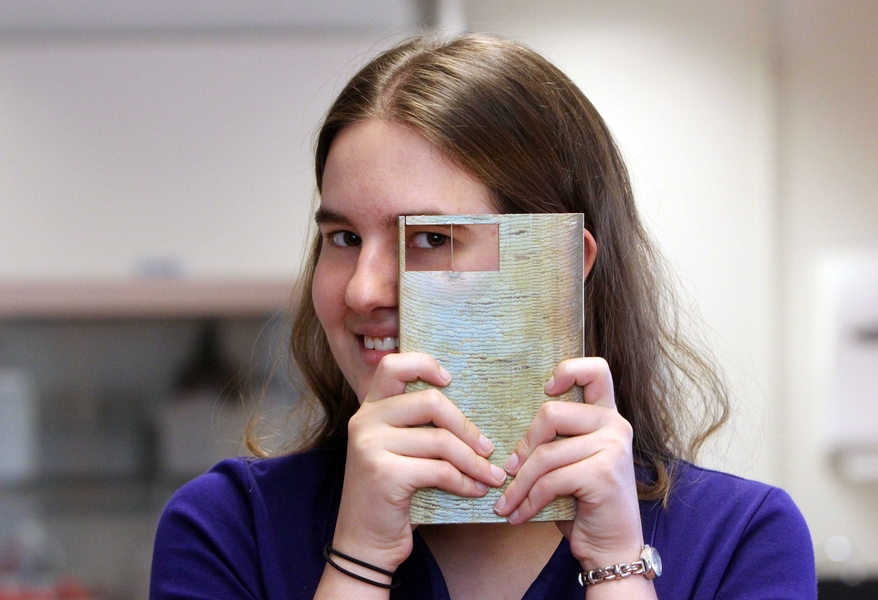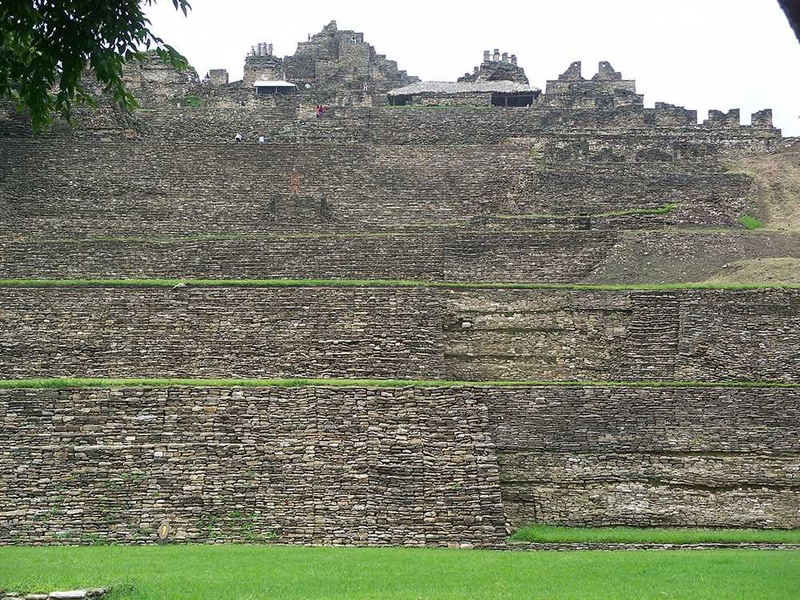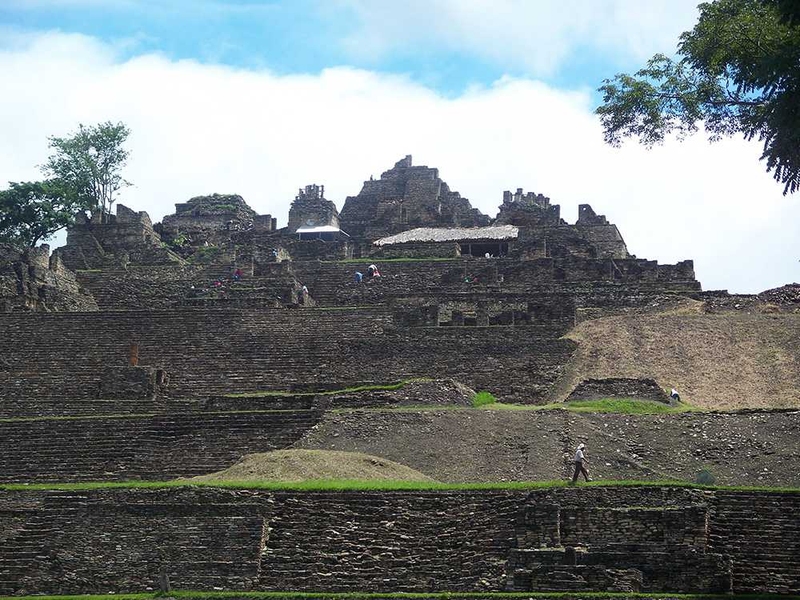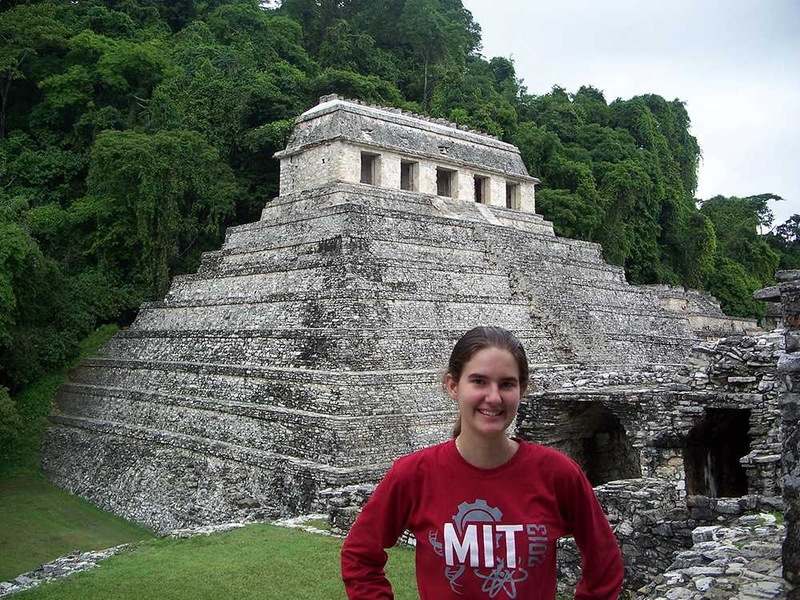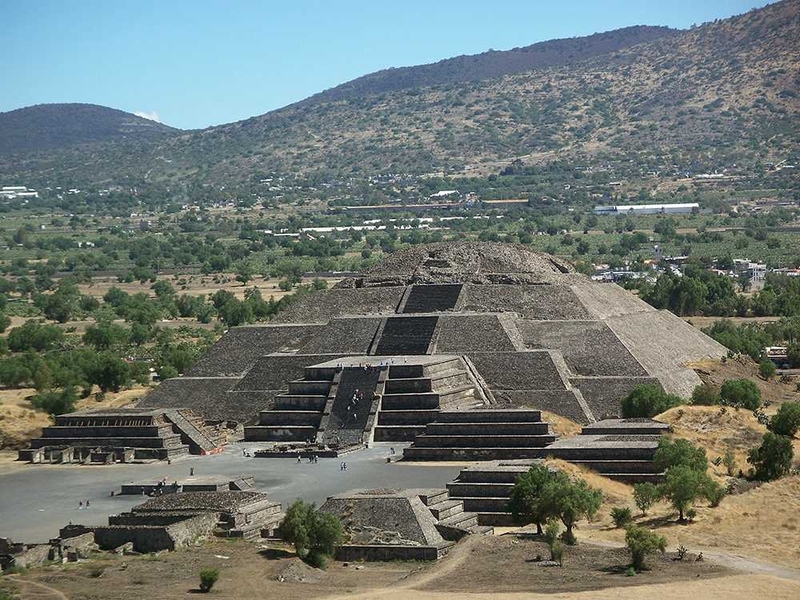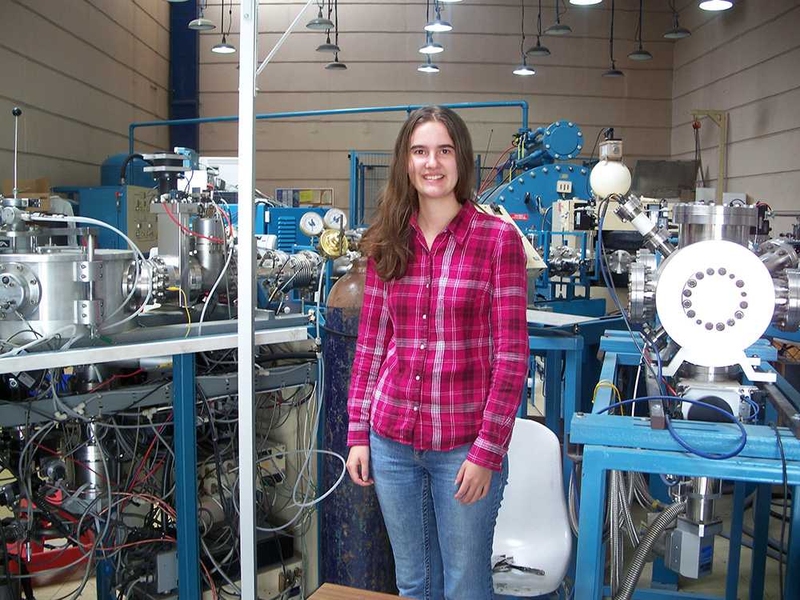When MIT senior Shannon Taylor peers through a microscope at tiny samples of ancient artifacts or their replicas, she sees the distinct outlines of individual grains and the intricate crystal structure of the copper and silver they contain. What she doesn’t necessarily see is the life and culture of the people who created these materials 500 years ago.
But Taylor — a materials science and engineering major from North Carolina who likes to read mystery novels and experiment with new recipes in her free time — has had the chance during her time at the Institute to look beyond the microscope. She’s stepped into the boots of a metal smith right on MIT’s campus, and she’s traveled to 500-year-old churches in Mexico.
These adventures weren’t always part of her plan, however.
The daughter of a statistician and a mathematician, Taylor once thought she might study mathematics. Interested in math and science from a young age, she loved doing science projects in elementary school. “I came up with one project counting seeds in apples to see what the average number of seeds was,” she remembers.
In her freshman year of high school, she was invited to present her project — a “made-at-home” experiment on the degradation of recycled paper in landfills — at the Intel International Science and Engineering Fair. Taylor was daunted by the professional lab results that others were presenting, but loved her experience there, where she “found out what engineering really was.”
After that, she thought about going into environmental engineering — until her first semester at MIT, when she took an introductory chemistry class with a focus on materials and an introductory archaeology course, and loved them both.
At MIT, archaeology is within the Department of Materials Science and Engineering (DMSE), Taylor notes. “It takes a more scientific approach than your mainstream archaeology program.”
Taylor tried her hand as a metal smith in one of her classes, 3.094 (Materials in Human Experience). “We actually cast rectangular-shaped ingots of copper and silver,” Taylor recalls. “We got to work and hammer them in the forge in the basement of Building 4.”
In the spring of her freshman year, Taylor began a research project on metals in Mexico and South America with Dorothy Hosler, professor of archaeology and ancient technology in DMSE, through MIT’s Undergraduate Research Opportunity Program. To start her off, Hosler assigned Taylor a 15th-century artifact: a small copper-arsenic bell from her field site in Belize.
Taylor’s work with Hosler has continued throughout her time at the Institute. Beyond the chemistry and mechanics of the metals she studies, Taylor has learned quite a bit about their history.
“Not only were their metallic and casting properties important, but their color, particularly gold and silver, was very important culturally,” Taylor explains. In the case of copper-silver alloys, ancient metal smiths would heat the metal to high temperatures — a process called annealing — to achieve a silver color. Though they didn’t know it at the time, they were taking advantage of the fact that copper reacts with oxygen before silver does, forming outer layers of copper oxides. The metal can then be dipped in a “pickling solution” that removes these copper layers, leaving it gleaming silver.
“How they figured that out, I have no idea,” Taylor says. “Probably trial and error.”
This trick, however, affects only the outer layers of the metal; the majority of the material remains a copper-silver alloy — a fact that may have duped Spanish conquistadors. “When the Spanish conquered the Aztec and Incan empires, they discovered what they thought was gold and silver and tried to bring it back to Spain, but it may not actually have been pure,” Taylor says.
Taylor hasn’t just gotten to learn about Mexico and its history — she’s gotten to go there and see it firsthand. Two summers ago, she traveled to Mexico through the MIT International Science and Technology Initiatives (MISTI), a program of the School of Humanities, Arts, and Social Sciences that connects students with international internships. Taylor worked in a physics lab at UNAM, one of Mexico’s national universities, using nondestructive techniques to study old paintings and metal crowns for restoration purposes. To restore old artifacts properly, she says, you don’t just dab a fresh coat of paint on.
“Before you restore it, you need to know a lot about the chemistry and structure,” Taylor explains, “to get as close to the original composition as possible, to restore it in an authentic manner.”
To figure out the chemical composition of the artwork, Taylor says, she and her UNAM colleagues used a technique called X-ray fluorescence. “With a lot of other methods, you take a sample, but for really old things, that isn’t really desirable,” Taylor says.
So, the team would lug their equipment into a 16th-century church — built around the time of the Spanish conquest — and aim at the murals painted on the walls of the church. By targeting the murals with high-energy X-rays and measuring the energy re-emitted by the wall, they were able to determine the composition of the paint. Results from Taylor’s work in Mexico were published earlier this year by the Materials Research Society.
Beyond her forays into the past, Taylor enjoys playing flute in the MIT Wind Ensemble. “After classes, after the stress of everyday life, I can just go and play and do something completely different,” Taylor says.
After graduating next spring, Taylor hopes to attend graduate school for materials science. Though she will likely move away from archaeology and toward structural materials, Taylor says her experience as an undergraduate has given her a broader perspective. “I know now that the science is one piece of it,” she says. “It’s also looking at the people this piece of science is going to impact.”
But Taylor — a materials science and engineering major from North Carolina who likes to read mystery novels and experiment with new recipes in her free time — has had the chance during her time at the Institute to look beyond the microscope. She’s stepped into the boots of a metal smith right on MIT’s campus, and she’s traveled to 500-year-old churches in Mexico.
These adventures weren’t always part of her plan, however.
The daughter of a statistician and a mathematician, Taylor once thought she might study mathematics. Interested in math and science from a young age, she loved doing science projects in elementary school. “I came up with one project counting seeds in apples to see what the average number of seeds was,” she remembers.
In her freshman year of high school, she was invited to present her project — a “made-at-home” experiment on the degradation of recycled paper in landfills — at the Intel International Science and Engineering Fair. Taylor was daunted by the professional lab results that others were presenting, but loved her experience there, where she “found out what engineering really was.”
After that, she thought about going into environmental engineering — until her first semester at MIT, when she took an introductory chemistry class with a focus on materials and an introductory archaeology course, and loved them both.
At MIT, archaeology is within the Department of Materials Science and Engineering (DMSE), Taylor notes. “It takes a more scientific approach than your mainstream archaeology program.”
Taylor tried her hand as a metal smith in one of her classes, 3.094 (Materials in Human Experience). “We actually cast rectangular-shaped ingots of copper and silver,” Taylor recalls. “We got to work and hammer them in the forge in the basement of Building 4.”
In the spring of her freshman year, Taylor began a research project on metals in Mexico and South America with Dorothy Hosler, professor of archaeology and ancient technology in DMSE, through MIT’s Undergraduate Research Opportunity Program. To start her off, Hosler assigned Taylor a 15th-century artifact: a small copper-arsenic bell from her field site in Belize.
Taylor’s work with Hosler has continued throughout her time at the Institute. Beyond the chemistry and mechanics of the metals she studies, Taylor has learned quite a bit about their history.
“Not only were their metallic and casting properties important, but their color, particularly gold and silver, was very important culturally,” Taylor explains. In the case of copper-silver alloys, ancient metal smiths would heat the metal to high temperatures — a process called annealing — to achieve a silver color. Though they didn’t know it at the time, they were taking advantage of the fact that copper reacts with oxygen before silver does, forming outer layers of copper oxides. The metal can then be dipped in a “pickling solution” that removes these copper layers, leaving it gleaming silver.
“How they figured that out, I have no idea,” Taylor says. “Probably trial and error.”
This trick, however, affects only the outer layers of the metal; the majority of the material remains a copper-silver alloy — a fact that may have duped Spanish conquistadors. “When the Spanish conquered the Aztec and Incan empires, they discovered what they thought was gold and silver and tried to bring it back to Spain, but it may not actually have been pure,” Taylor says.
Taylor hasn’t just gotten to learn about Mexico and its history — she’s gotten to go there and see it firsthand. Two summers ago, she traveled to Mexico through the MIT International Science and Technology Initiatives (MISTI), a program of the School of Humanities, Arts, and Social Sciences that connects students with international internships. Taylor worked in a physics lab at UNAM, one of Mexico’s national universities, using nondestructive techniques to study old paintings and metal crowns for restoration purposes. To restore old artifacts properly, she says, you don’t just dab a fresh coat of paint on.
“Before you restore it, you need to know a lot about the chemistry and structure,” Taylor explains, “to get as close to the original composition as possible, to restore it in an authentic manner.”
To figure out the chemical composition of the artwork, Taylor says, she and her UNAM colleagues used a technique called X-ray fluorescence. “With a lot of other methods, you take a sample, but for really old things, that isn’t really desirable,” Taylor says.
So, the team would lug their equipment into a 16th-century church — built around the time of the Spanish conquest — and aim at the murals painted on the walls of the church. By targeting the murals with high-energy X-rays and measuring the energy re-emitted by the wall, they were able to determine the composition of the paint. Results from Taylor’s work in Mexico were published earlier this year by the Materials Research Society.
Beyond her forays into the past, Taylor enjoys playing flute in the MIT Wind Ensemble. “After classes, after the stress of everyday life, I can just go and play and do something completely different,” Taylor says.
After graduating next spring, Taylor hopes to attend graduate school for materials science. Though she will likely move away from archaeology and toward structural materials, Taylor says her experience as an undergraduate has given her a broader perspective. “I know now that the science is one piece of it,” she says. “It’s also looking at the people this piece of science is going to impact.”
